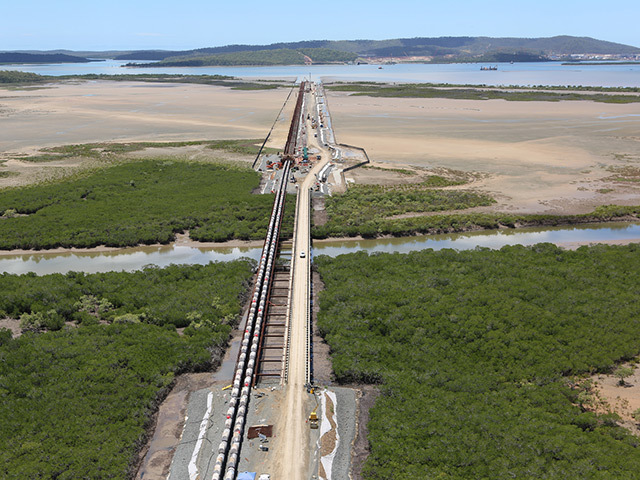
The cost to ship super-chilled natural gas has tumbled to the lowest level in more than four years and is forecast to fall further. That’s good news for buyers and sellers of the fuel.
Rates to transport liquefied natural gas have declined to about $50,000 per day and will probably go lower before recovering, according to Andrew Buckland, a London-based analyst at Wood Mackenzie Ltd.
That compares with more than $140,000 a day in 2012, the energy consulting firm found in a report last month.
Lower rates can benefit traders that sign short-term contracts and give LNG players flexibility in where they deliver the gas, said Hal Miller, president of consulting company Galway Group in Houston. At the same time, ship owners will be hurt by falling rates.
“I’d expect prices to stay in this ballpark for a couple of years before they start turning around” as new LNG projects begin shipments, Miller said.
Trafigura Beheer BV late last year expected to more than double its LNG trading for 2014, helped by lower freight rates and increased volatility.
Vitol SA said in November that it remains the “main player” of the fuel as companies including Glencore Plc, Gunvor Group Ltd. and Noble Group Ltd. entered the market or expanded.
Prices have dropped amid rising numbers of LNG vessels, which transport gas that has been cooled and condensed to liquid form at about minus 160 degrees Celsius (minus 260 Fahrenheit).
The prospect of significant US LNG exports drove ship orders to a record high of 67 last year, while rapidly rising rates in 2011 after the nuclear crisis in Japan spurred speculative orders, according to Wood Mackenzie.
LNG ships ordered three or four years ago have struggled to find work and compete with newer, larger and more fuel-efficient vessels, Buckland said.
That’s pushed rates to the lowest since late 2010, he said.
The market could stay depressed until the middle of next year with rates potentially sinking to $40,000 a day with too many vessels, said Tatsuo Osakabe, the Tokyo-based managing director of Fearnleys Japan, a shipping broker. Owners who ordered ships speculatively “based on spot market price and sentiment” will lose from the lower rates, he said.
“Once the US projects start up and their cargoes move into Asia, it could help the market pick up,” Osakabe said, adding that rates could return to $100,000 a day if demand surges.
Prices of the fuel in Asia have dropped along with shipping rates as supply grows and oil tumbles, and are poised to average below $10 per million British thermal units in 2015 for the first time in four years.
Transporting the gas in liquid form to Asia could represent about 20 percent of the total costs of a U.S. export development, Galway’s Miller said.
“Shipping is a big component of the cost structure, so to the extent that you can drive that down really makes a difference,” Miller said. If “shipping costs can be reduced it just makes US LNG much more competitive,” he said.
Recommended for you
